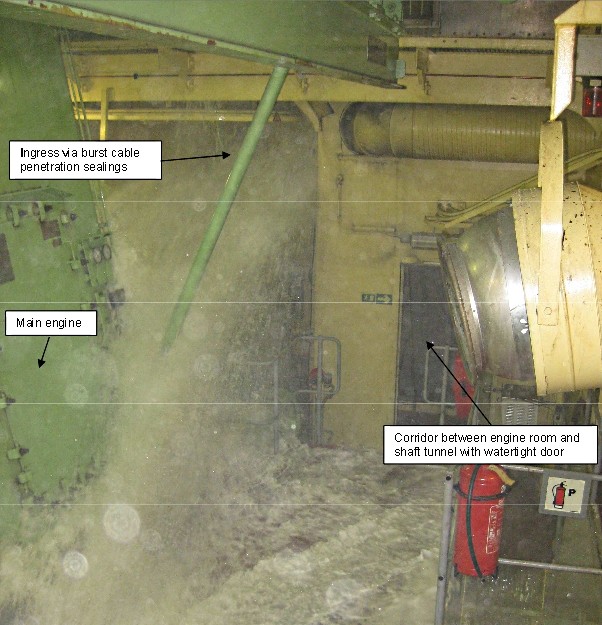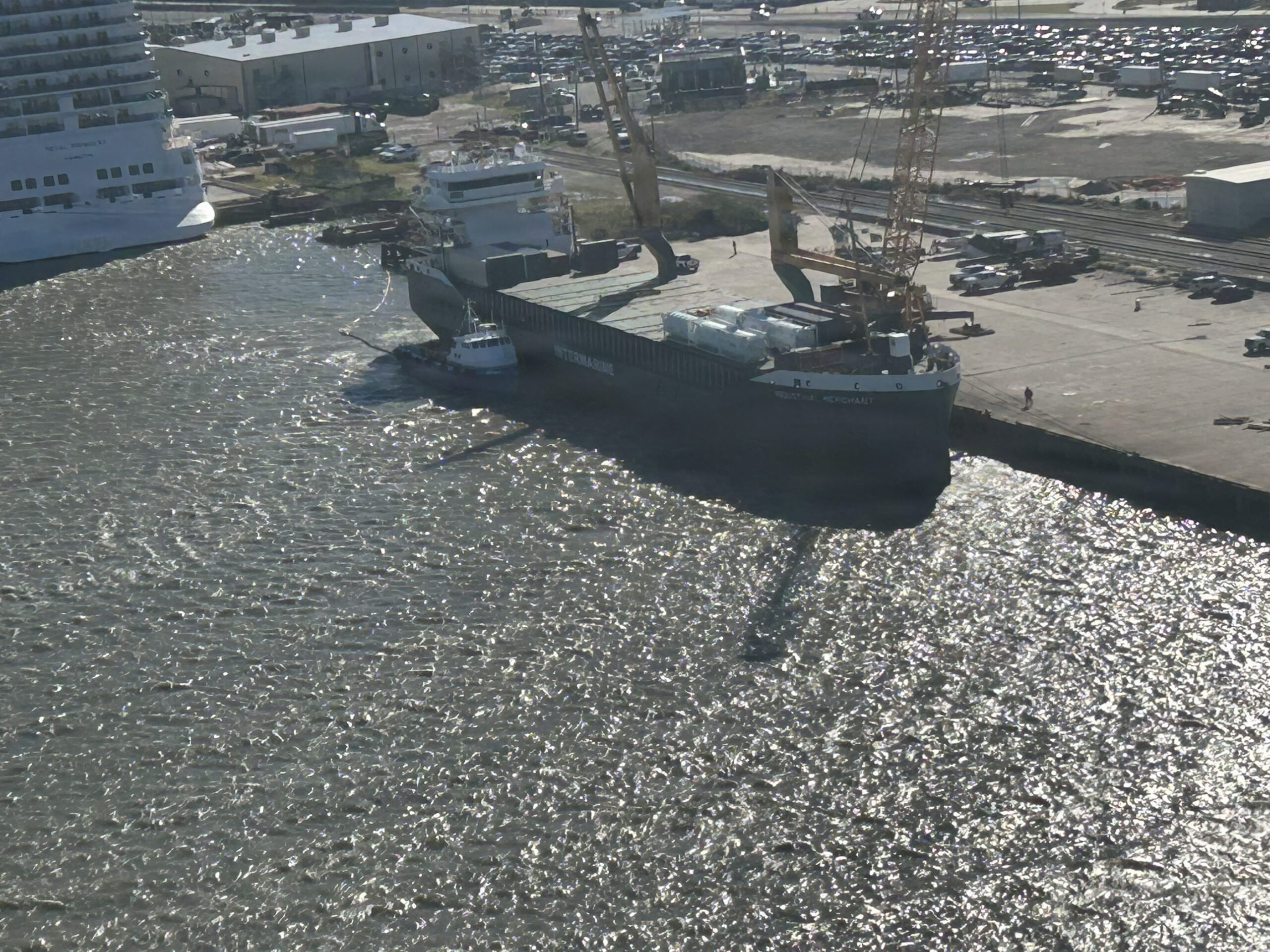The Emma Maersk at Port Said, Egypt
The EMMA MAERSK suffered a flooding incident in February as it was getting ready to transit the Suez Canal. As reported earlier, water entered the vessel through a damaged stern thruster. The flooding was initially contained in the shaft tunnel, however, the Danish Maritime Authority’s investigation report just released notes that once the pipe tunnel was full and the pressure equalized with the depth of the hull, the water found a weak spot, cable penetrations through the water-tight bulkhead.

According to the Danish Maritime Accident Investigation Board (DMAIB),”the main technical sequence of events were a break-down of the forward stern thruster causing a major leakage into the shaft tunnel, a collapse of the watertight integrity of the bulkhead between the shaft tunnel and the engine room, primarily caused by non-effective cable penetration sealings and some undesirable properties of the bilge system and the emergency bilge suction from the engine room. Throughout the course of events, all officers and crew members were constantly disturbed and highly stressed by the sound of countless alarms, which made it extremely difficult to concentrate on the many challenges that appeared.”
Simply put, penetrations are holes in a watertight bulkhead. A penetration can be to permit movement by crew, cargo (think car carriers), pipes, portholes, propeller shafts and electrical cables. Each kind of penetration has to be sealed, whether by a watertight door, shaft seal packing or other way. The sealing of the cable penetrations on the EMMA MAERSK were not able to withstand the water pressure of a flooded shaft alley.
At about 2205 hours, a 3rd engineer, who was standing at the aft part of the main engine watching the situation develop, became aware that water unexpectedly began flowing from a 440 volt AC outlet at the port side of the engine room some five or six metres from the water-tight bulkhead.
As the 3rd engineer investigated this unexpected scenario, he heard a sudden blast and saw one of four cable penetration sealings in the water tight bulkhead give way to the water pressure followed by a massive ingress of seawater. A few moments later, the other three cable penetration sealings also failed which resulted in an even larger ingress of water into the engine room.
With a draught of approximately 15.1 metres, the entire space of the shaft tunnel and the emergency exit, leading vertically from the aft part of the shaft tunnel to the cargo hold, had been filled by seawater. The water pressure at the propeller shaft sealing and cable penetrations of the watertight bulkhead was therefore equal to a water column of appr. 8.9 metres (Note: 29 feet below sea level!). – DMA Report
The accident report is a great read and I dare say a must read for every engineer and Captain/Chief mate. I especially recommend reading the section covering the events in the engine room. Then read up on the section covering the sealing of the cable penetrations, or more appropriately covering how the cable penetrations were improperly sealed by using parts meant to seal for gas and fire, not watertightness. There is no telling how this accident might have ended had they been at sea. Congrats to the crew for dealing with a very dramatic incident.
So how many of you are going to take a closer look at the cable penetrations on your ship the next time your sailing?

 Join The Club
Join The Club












